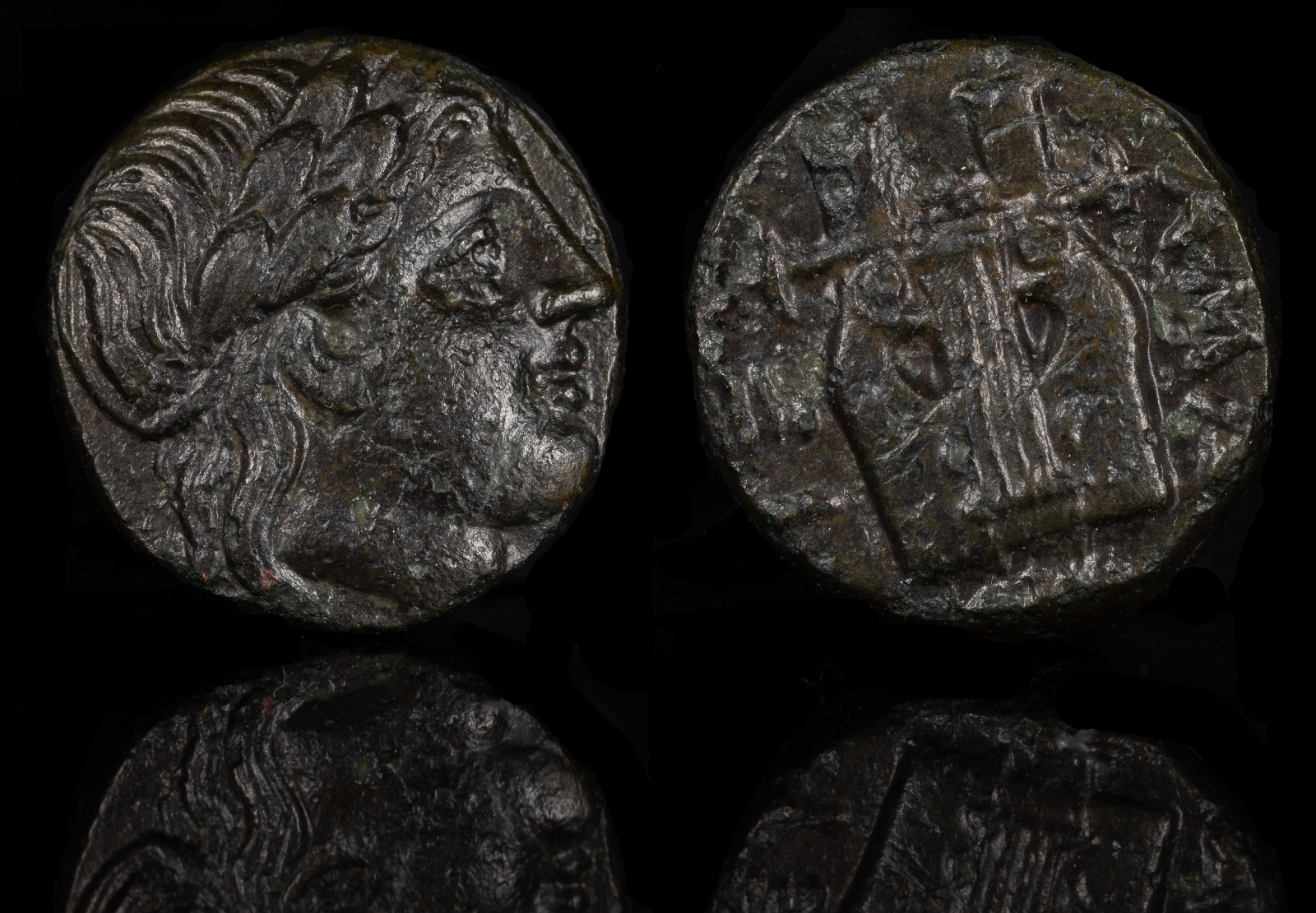
10.61mm, 1.52g 4th Century BCE
Obverse: Laureate head of Apollo Smintheos right
Reverse: ΑΜΑ-ΞΙ, lyre
SNG Copenhagen 341
Hamaxitos was famous in ancient times for its sanctuary of Apollo Smintheos, who is depicted on the obverse of this coin. Smitheos literally means ‘mouse-killer’ and per Strabo there was a small mouse at the base of the sculpture.
The story comes from a bunch of dense Cretans who received an oracle to settle wherever the “earthborn” would attack them. One night, while they were camped, a whole horde of mice came and ate all the leather in their weapons and equipment. They interpreted this as the meaning of the oracle, so they founded the city Hamaxitos – which means “wagon”.
Within the sanctuary, mice were sacred. Therefore, this became the happening place to be for a mouse, and so the statue was made as if it was about to step on a mouse, presumably because there were so many mice in the place that you had to watch your step.
Aelian later confirms that the people of Hamaxitos worshipped mice and that, within the temple, they were fed and kept at public expense, while below the altar the white mice made their nests. Another legend states that the mice killed all the locals crops, and an oracle told them that the only way to get out of the matter was to worship them, after which the mice stopped stunting the crops.
Archeological digs have suggested that the city was no longer inhabited after the 4th century BCE. No ancient sources tell us why, but perhaps the mice got them.